AREA AND VOLUME OF SIMILAR SHAPES WORKSHEET
Subscribe to our ▶️ YouTube channel 🔴 for the latest videos, updates, and tips.
For each pair of similar figures, find the unknown area.
Problem 1 :
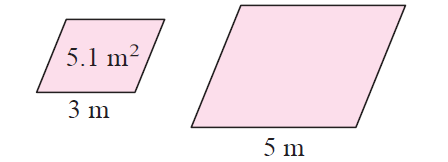
Problem 2 :
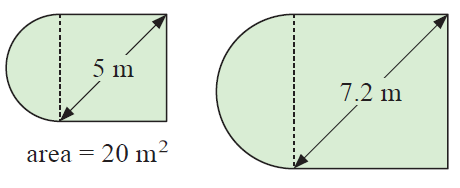
Problem 3 :
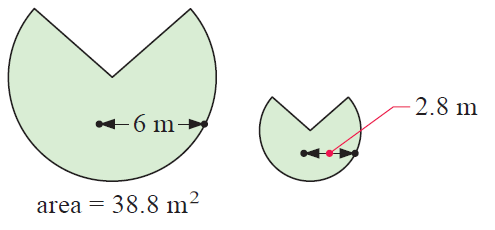
Problem 4 :
In the given figure, the area of triangle BCD is 6.4 cm2. Find the area of
(a) Triangle ACE
(b) Quadrilateral ABDE
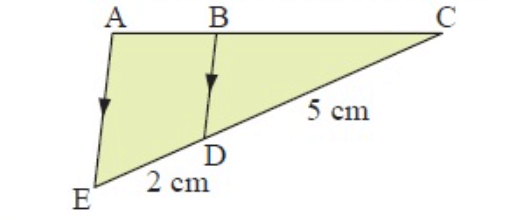
Problem 5 :
Find
(a) The value of x
(b) The area of triangle PQT is given quadrilateral QRST has the area 22 m2
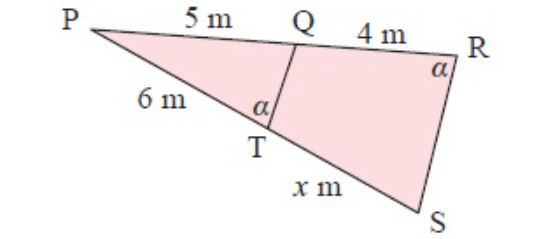
Problem 6 :
What will happen to the volume of
(a) a sphere if the radius is doubled
(b) A cylinder if the radius and the height are increased by 50% ? Solution

Answer Key
(1) 14.16 m2
(2) 41.6 m2
(3) 8.47 m2
(4) (a) 12.54 cm2 (b) 6.14 cm2
(5) (a) x = 1.5 cm (b) 17.6 m2
(6) (a) It is multiplied by 8
(b) It is multiplied by 3.375
Problem 1 :
Triangle DEC has area 4.2 cm2.
a) Find the area of triangle ABC.
b) Find the area of quadrilateral ABED.
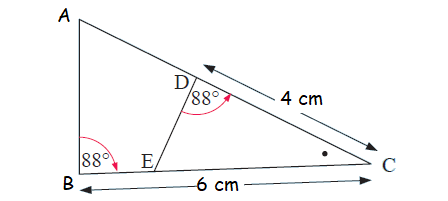
Problem 2 :
If triangle ABC has area 15 cm2:
a) find the area of ΔCDE
b) find the area of PQED.
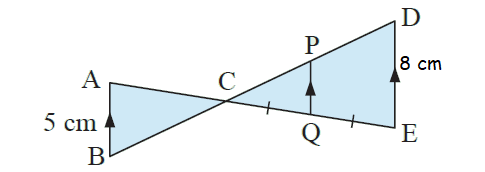
Problem 3 :
What will happen to the volume of:
a) a sphere if the radius is doubled
b) a sphere if the radius is increased by 20%
Problem 4 :
Triangle A is similar to Triangle B. If the scale factor of ΔA to ΔB is 4 to 5, what is the ratio of the perimeters of ΔA to ΔB? ____________ What is the ratio of the areas of ΔA to ΔB? __________________
Problem 5 :
Pyramid X is similar to Pyramid Y. If the scale factor of X:Y is 3:7, what is the ratio of the surface areas of X:Y? __________ What is the ratio of the volumes of X:Y? ____________
Problem 6 :
The ratio of the surface areas of two similar cones is 16:49. What is the scale factor between the similar cones? __________ What is the ratio of the volumes of the similar cones? __________
Problem 7 :
Two spheres have a scale factor of 1:3. The smaller sphere has a surface area of 16 ft2. Find the surface area of the larger sphere.
Problem 8 :
Two rectangular prisms are similar and the ratio of their sides is 2:3. The surface area of the larger rectangular prism is 1944 cm2. What is the surface area of the smaller rectangular prism?
Problem 9 :
The ratio of the sides of two similar cubes is 3:4. The smaller cube has a volume of 729 m3. What is the volume of the larger cube?
Problem 10 :
Pyramid X is similar to pyramid Y. The Surface area of pyramid X is 135 cm2, and the surface area of pyramid Y is 240 cm2. If the volume of pyramid X is 189 cm3, then what is the volume of pyramid Y?
Answer Key
1) i) 9.45 cm2
ii) area of quadrilateral is AEBD is 5.25 cm2.
2) i) Area of ΔCPQ = 9.6
ii) Area of quadrilateral DPQE = 28.8 cm2
3) a) volume of the new sphere will be 8 times volume of old sphere.
b) volume of the new sphere will be 1.728 times volume of old sphere.
4) the ratio between the area of triangles A and B is 16 : 25
5) Volume of Pyramid X : Volume of Pyramid Y
= 27 : 343
6) Ratio between volume = 64 : 343.
7) Surface area of large sphere = 144
8) Surface area of small sphere = 864 cm2
9) Volume of large cube = 1728 m3
10) Volume of large cube = 450
Problem 1 :
The two rectangles given below are similar. Find the perimeter of the rectangle EFGH.
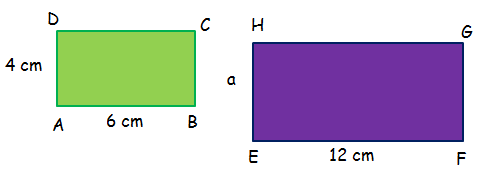
Problem 2 :
The two parallelograms shown below are similar. Find the perimeter of the parallelogram ABCD.
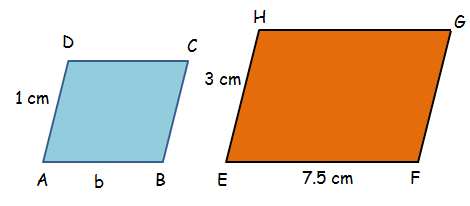
Problem 3 :
The perimeters of two similar triangles is in the ratio 3 : 4. The sum of their areas is 75 cm2. Find the area of each triangle
Problem 4 :
The areas of two similar triangles are 45 cm2 and 80 cm2. The sum of their perimeters is 35 cm. Find the perimeter of each triangle.
Problem 5 :
Cube B is an enlargement of cube A.
(a) What is the scale factor of enlargement?
(b) How many times larger is the surface area of B than A?
(c) How many times larger is the volume of cube B than A?
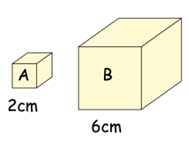
Problem 6 :
The surface areas of two similar shapes are in the ratio 25 : 81. The length of the smaller shape is 30 cm. Work out the length of the larger shape
Problem 7 :
The volumes of two similar shapes are in the ratio 1000 : 27. The surface area of the larger shape is 250 cm² Work out the surface area of the smaller shape.
Answer Key
1) the perimeter of the rectangle EFGH is 40 cm.
2) the perimeter of the parallelogram ABCD is 7 cm.
3)
Area of 1st Δ = 9(3) = 27 cm2
Area of 2nd Δ = 16(3) = 48 cm2
4)
Perimeter of 1st Δ = 3x = 3(5) = 15 cm
Perimeter of 2nd Δ = 4x = 4(5) = 20 cm
5)
a) the scale factor is 1 : 3
b) Surface area of cube B is 9 times of surface area of cube A.
c) 1 : 27
6)
Side length of small shape = 5(6) ==> 30 cm
Side length of large shape = 9(6) ==> 54 cm
7) the required surface area of smaller shape is 22.5 cm².
Subscribe to our ▶️ YouTube channel 🔴 for the latest videos, updates, and tips.
Kindly mail your feedback to v4formath@gmail.com
We always appreciate your feedback.
About Us | Contact Us | Privacy Policy
©All rights reserved. onlinemath4all.com

Recent Articles
-
10 Hard SAT Math Questions (Part - 38)
Dec 29, 25 04:21 AM
10 Hard SAT Math Questions (Part - 38) -
10 Hard SAT Math Questions (Part - 39)
Dec 28, 25 11:20 PM
10 Hard SAT Math Questions (Part - 39) -
10 Hard SAT Math Questions (Part - 41)
Dec 28, 25 06:05 PM
10 Hard SAT Math Questions (Part - 41)

